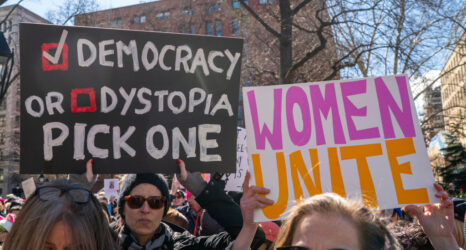When it comes to data about sexual harassment in the workplace, more is better. In order to have a better chance at eliminating workplace harassment, a greater amount of nuanced information is needed to understand the role of gender in relation to the type of setting in which sexual harassment is reported.
In the era of the #MeToo movement, this data is more imperative than ever—although much of it may seem unsurprising. According to a new report from the Women’s Initiative at the Center for American Progress, for example, women are more likely to report sexual harassment than men. But this data does illustrate an aspect of the fight to end such behavior in the workplace that feminists have long echoed: that it’s the patriarchy which lies at the root of a cultural epidemic of sexual misconduct.
The Equal Employment Opportunity Commission (EEOC) reported that in 2017, around 10,000 sexual harassment complaints were filed. Of those, 16.5 percent of sexual harassment claims in the workplace were filed by men—and a whopping 83 percent were filed by women. (The EEOC also found that about 70 percent of sexual harassment cases are not reported, meaning that the 10,000 filings are only a fraction of the true amount of sexual harassment instances.)
This data demonstrates that women not only report sexual harassment at a higher rate than men, but also report sexual harassment at a higher rate than men—even in male-dominated spaces.
In environments dominated by men, patriarchal norms can run rampant, meaning that sexual harassment instances could skyrocket. This confirms what so many people already intuitively know: the more misogynistic behavior is ignored and/or encouraged, the more frequently it will happen.
Examining sexual harassment charge data with industry and gender breakdowns provides a good starting point for evaluating differences between women and men in sexual harassment charge filings. Unpublished EEOC data from FY 2010-FY 2015 shows that there were just less than 45,000 sexual harassment charges filed during this time period. Approximately 45 percent of these charges—almost 20,000 filings—included information on the industry where the charge arose.
Because industry information was not available for every charge, the data has limitations. Nonetheless, it does offer a unique snapshot that can provide some initial insights and inform future research. Overall, women and men file sexual harassment charges across all industries. The bulk of the charges are filed by women and vary by industry.
The breakdown in charges by gender does not tell the entire story, in part because different percentages of women and men work in different industries. A closer look at the data, alongside the percentages of women and men in the workforce in each industry, shows that the percentage of sexual harassment charges filed by women in each industry is consistently higher than the percentage of women who work in the industry. Conversely, the percentage of men filing sexual harassment charges in each industry is consistently lower than the percentage of men who work in that industry. For example, although 41 percent of the sexual harassment charges filed in the mining industry during the time period were filed by men, that percentage is far less than the 86.9 percent of men in the overall mining workforce.
The data suggest even starker differences between women and men in their reporting of sexual harassment, when the rate of reporting is calculated to take into account the actual percentage of women and men working in that particular industry. For example, the data show that women—who constitute less than one-quarter of the transportation industry workforce—were 10 times more likely to report sexual harassment to the EEOC than men in the transportation industry.
There is still much more work to be done in order to grasp the true cost of sexual harassment in the workplace. Women in Congress have come together to demand the EEOC do a study calculating the true cost of sexual harassment—including indirect costs like the loss of human capital in the workforce and the economic costs to women who leave their jobs to evade men’s misconduct. Combined with the monetary value of settlements, lawsuits, litigation fees, loss of productivity, high turnover rates and more, the true monetary cost of sexual harassment in the workplace could be in the billions.





